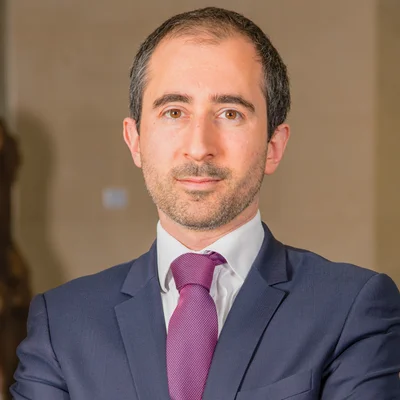
Currency derivatives house of the year: BNP Paribas
Risk Awards 2021: Long dollar inventory and global forwards e-book helped clients navigate March crisis

During a financial crisis, one of the most common themes is a rush into US dollars. This was no less true during the coronavirus-driven chaos in March 2020, when corporates rushed to redeem investments from money-market funds and draw down on revolving credit facilities, while whipsawing markets led to a huge rise in margin calls on derivatives trades.
But for Neehal Shah, global head of G10 foreign exchange trading and Europe, Middle East and Africa head of FX and local markets institutional sales at BNP Paribas, the funding squeeze that characterised March, at least until the Federal Reserve stepped in with its dollar swap lines, did not catch him off guard. He was more surprised at how slow the options markets had reacted to the news coming from China at the start of 2020.
The French bank decided to act as early as January, building up a long US dollar position on its books in anticipation of a potential Covid-driven funding squeeze, which would allow it to be well positioned if clients came knocking.
“It was surprising how much longer it took for implied volatility to move, given that all the signals were there from January,” says Shah. “That’s when we started the process of building up the dollar inventory, because the premium wasn’t that large at the time and we thought ‘Okay, the positions are probably better to be skewed one way’.”
Over the following weeks, BNP Paribas implemented a long dollar strategy across its trading desks and coupled that with a series of risk-off strategies in its portfolios.
“In March, dollar funding was trading at a significant premium and there was clearly a demand for dollars before the central bank swap lines came into place. By building the dollar inventory we anticipated some of our client demand, and we were able to provide them with that liquidity through our channels to help them through the funding crisis that we saw,” says Shah.
“By effectively committing to this strategy, we knew the core underlying client demand was there and our role was being able to facilitate that, and it really gave us confidence in holding that inventory,” he adds.
We have roughly 20 banks in our pool, but BNP Paribas was always there for us
Treasury head of a large multinational
A treasury head of a large multinational with significant hedging needs in euro, sterling, Canadian dollar and Mexican peso, acknowledges the preparation the French bank made ahead of the crisis, and how helpful the trading desk was with a wide range of products, including leveraged forwards and target redemption forwards.
“We have roughly 20 banks in our pool, but BNP Paribas was always there for us,” says the treasury head. “They were very consistent in pricing during March and quick to get back with quotes, even on more unusual products. They were able to give us good prices, whereas others stepped away and lost market share with us.”
E-books to the rescue
Building a strong dollar inventory was only one part of the plan. As traders and salespeople began working from home, the challenge morphed into providing that liquidity to clients in the most efficient way.
Like many of its peers, the French bank has historically implemented a one-trader-one-book risk management infrastructure. Most forwards desks are still set up this way: a different trader looks after a single currency pair in each location the bank operates in.
But over the past few years, BNP Paribas built a set of global e-books – starting with spot FX and then moving into the forwards and options space – combining multiple assets in a single portfolio. It fully implemented the strategy in January 2020, and according to Shah this was crucial to the bank’s ability to provide liquidity to clients through the March funding squeeze.
“It’s been game-changing,” says Shah. “I don’t think we could have been there for our clients if we hadn’t created this. It has dramatically changed our business model.”

Taking forwards trading as an example, BNP Paribas used to have siloed forwards traders for euro, dollar, sterling, yen and other currencies. Now, everyone trades the same portfolio of risks globally, explains Adrian Averre, head of FX derivatives electronic trading at BNP Paribas.
With the help of algos, which can calculate large risk matrices almost instantaneously, traders have full visibility over whether their transactions will add or reduce the risk in the global portfolio. This can therefore reduce the need for external hedging, and synthetically creates a deeper internal liquidity pool where client trades can be matched off.
Reducing external hedging means less flow going externally to platforms and interdealer brokers, which reduces costs that can be passed onto clients.
“Internalisation has been a big theme for over a decade in spot FX and for us the key was to be able to learn from those lessons and apply them to other asset classes and into derivatives markets in particular,” says Shah.
“The moment you have to go to an external liquidity provider or another market maker, you’re effectively creating inefficiency, and that inefficiency is reflected in bid-offer spreads to a client,” he adds.
During March, BNP Paribas says it was able to retain internalisation rates in its electronic forwards trading portfolio of above 90%. The bank says average daily volumes have grown from $25 billion in the first quarter of 2020 to up to $40 billion in the final quarter, with some days seeing in excess of $60 billion.
“They clearly made investments in their internal technology, because the improvement we saw in e-pricing was substantial,” says a portfolio manager at a large asset manager. “During the crisis, we didn’t want to spread orders into the market and they were very helpful in managing the risks of my portfolio.”
A new FX robot
The last piece of the puzzle was the algos, which were improved with the development of BNP’s internal exchange, known as Bix. This exchange pulls together all of the FX flow within the bank, including uncorrelated liquidity sources such as transactional FX or options hedging flows, and allows anonymous trading at mid. Nominally there to cut down on the amount of internal trading that needs to be externalised, it was also opened to BNP’s FX spot algos as an additional pool of liquidity.

“Think of Bix as a utility that offers clients the opportunity to transact against and naturally offset liquidity within the bank without having to go into the market,” says Asif Razaq, global head of FX algorithmic execution at BNP Paribas. “This has proven a huge change for clients, because they could offset against a flow where we could guarantee zero market impact, since all that trade was effectively done within the BNP Paribas umbrella.”
Razaq says the tool became hugely useful to algo clients during the peak of the crisis, when liquidity in the market was scarce, spreads widened and clients turned to the execution method as a way of reducing costs. The bank says it saw a 150–250% increase in volume in March and April on its algo platform, and around half of these flows were able to be filled on Bix.
“Not only do they have the best FX algos in the market, but it’s good to see they haven’t sat on their laurels in this space and continue to innovate,” says the portfolio manager at the large asset manager.
Client solutions
The extraordinary demand for liquidity at the start of last year was particularly acute for corporates, which faced liquidity strains as their revenues became unstable very quickly. Many companies looked to restructure existing positions to free-up cash, and BNP Paribas was at the forefront of this activity on the FX side.
For example, one large Asian corporate needed cash, but issuing debt was not possible at the time, and few lenders were willing to extend credit lines to corporates in the midst of a global economic shock. It did have a series of Australian dollar/US dollar cross-currency swaps in its books though that were heavily in-the-money.

“The more traditional way to do this would have been to re-strike each of the swaps at the current spot and free up substantial realised FX mark-to-market. But that would have meant restructuring their hedge rates for different cross-currency swaps with different timings on the final cash flow,” says Nathalie Naffi, head of FX, local markets and commodity derivatives structuring at BNP Paribas.
Instead, BNP Paribas proposed a different solution which effectively resembled a loan, but in a derivatives format. The French bank extended funding to the corporate client through a one-legged cashflow swap, which can be thought of as an interest rate swap with only one fixed interest rate leg and no floating leg, with large initial and final payments based on the in-the-moneyness of the cross-currency swap.
Naffi says the solution offered similar economics to re-striking a swap and monetising the mark-to-market – for instance, payments are subject to netting under an International Swaps and Derivatives master agreement – but in an accounting-compliant and compact transaction that didn’t require different cashflow timings.
Quest for flexibility
As the Covid crisis took hold, companies around the world came to terms with the economic impact on their business, and flexibility became a priority for many corporate treasuries. Many looked for solutions where they could avoid being locked into FX hedges when there was still so much uncertainty about business and market conditions.
To answer these needs, BNP Paribas developed what it calls flexiterm forwards.
Similar to a vanilla forward, a client commits to buy or sell a certain amount of currency in the future. While the settlement date is fixed at the outset at a pre-agreed cost, the client can execute all or part of the size at any point during the window, as long as the full amount is traded by the settlement date.

“In essence, this gives clients some flexibility on both the amount that is hedged and the settlement date of the hedge to really match the uncertainty they might have on their cashflow,” says Frédéric Han, deputy head of FX structuring for Europe, the Middle East and Africa at BNP Paribas.
BNP Paribas also developed a version of the product for a French client that offered an option to increase the amount bought or sold in the settlement window by 20% to add further flexibility to the client’s cashflow hedge.
More than 1,000 flexi forwards were traded by the bank in 2020, with growing appetite particularly from medium-sized corporates.
The theme of flexibility was also paramount for real-money clients, who in the lead-up to March grew worried about elevated asset prices and the risk of a market correction. FX volatility in certain pairs has been shown to be a good, and cheap, alternative tail risk hedge of other asset classes such as equities.
BNP Paribas made the case to the funds, and as a result traded a number of G10 FX volatility swaps in an over-the-counter or certificate format, some north of $5 million in terms of vega in the lead-up to March.
“The multi-asset funds in particular that have exposure in equities and credit were looking to hedge that exposure with the view that if the market did downturn, there will be an impact on FX as a correlated asset class,” says Shah.
Only users who have a paid subscription or are part of a corporate subscription are able to print or copy content.
To access these options, along with all other subscription benefits, please contact info@risk.net or view our subscription options here: http://subscriptions.risk.net/subscribe
You are currently unable to print this content. Please contact info@risk.net to find out more.
You are currently unable to copy this content. Please contact info@risk.net to find out more.
Copyright Infopro Digital Limited. All rights reserved.
As outlined in our terms and conditions, https://www.infopro-digital.com/terms-and-conditions/subscriptions/ (point 2.4), printing is limited to a single copy.
If you would like to purchase additional rights please email info@risk.net
Copyright Infopro Digital Limited. All rights reserved.
You may share this content using our article tools. As outlined in our terms and conditions, https://www.infopro-digital.com/terms-and-conditions/subscriptions/ (clause 2.4), an Authorised User may only make one copy of the materials for their own personal use. You must also comply with the restrictions in clause 2.5.
If you would like to purchase additional rights please email info@risk.net
More on Awards
Market liquidity risk product of the year: Bloomberg
Bringing clarity and defensibility to liquidity risk in a fragmented fixed income market
FRTB (SA) product of the year: Bloomberg
A globally consistent and reliable regulatory standardised approach for FRTB
Best use of cloud: ActiveViam
Redefining high-performance risk analytics in the cloud
Best use of machine learning/AI: ActiveViam
Bringing machine intelligence to real-time risk analytics
Collateral management and optimisation product of the year: CloudMargin
Delivering the modern blueprint for enterprise collateral resilience
Flow market-maker of the year: Citadel Securities
Risk Awards 2026: No financing; no long-dated swaps? “No distractions,” says Esposito
Pricing and analytics: fixed income – Quantifi
Quantifi delivers high-performance, transparent and adaptable pricing and risk analytics for fixed income and credit markets
Derivatives house of the year: Citi
Risk Awards 2026: Rev up, RWAs down, as US bank gets back on track (with added XiNG and XiP)







